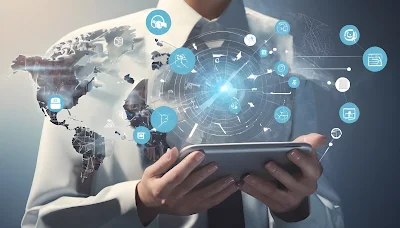Introduction
We are surrounded by technology in every part of our lives in the fast-paced world of today. Our interactions with various forms of technology begin the moment we wake up and end when we go to bed. But which particular type of technology is the most common and affects our day-to-day activities?
Definition of Technology
Any tool, machine, piece of gear, or system that was developed using scientific knowledge and used for real-world applications is considered a part of technology. It makes communication easier, boosts productivity across the board, and increases efficiency.
A Historical Angle
The history of technology began in prehistoric periods when people employed basic stone and wood tools. Modern innovation was made possible by the centuries-long revolutions in cultures brought about by inventions like the printing press, steam engine, and the wheel.
Technology's Evolution
Technology has changed at an exponential rate due to the scientific and engineering fields' rapid breakthroughs. Every major advancement in technology, including the creation of computers and the internet as well as electricity, has changed the way we communicate, work, and live.
Effects of Technology on Everyday Life
The way we purchase, learn, amuse ourselves, and even take care of our health has been profoundly impacted by technology. From healthcare and finance to transportation and entertainment, it has changed a wide range of businesses.
Most Commonly Used Technologies Today
Smartphones
Internet
Through instantaneous access to information, social media and email conversation, and online purchasing, the internet links individuals all over the world.
Social Media
Computers
Computers fuel commerce, research, education, and entertainment while promoting creativity and simplifying work.
Artificial Intelligence
Artificial Intelligence (AI) technology, like virtual assistants and machine learning algorithms, is being incorporated into our gadgets and services more frequently to improve automation and customization.
Wearable Devices
Cloud Computing
Cloud services enable storage, processing, and access to data and applications remotely, fostering collaboration and scalability.
Factors Influencing Technology Adoption
Affordability, accessibility, usability, and societal trends are some of the elements that affect how quickly technology is adopted. Furthermore, innovations tend to be widely accepted when they meet specific demands and offer observable benefits.
Future Trends in Technology
Exciting developments in biotechnology, 5G networks, quantum computing, and sustainable energy sources are just a few of the technological possibilities that lie ahead. These advancements hold the potential to drastically alter our way of life and interactions with the outside world.
Conclusion
In conclusion, technology permeates every aspect of modern life, with various forms serving essential roles in our daily routines. While the most used form of technology may vary depending on individual preferences and societal trends, the convergence of smartphones, internet connectivity, social media, and AI technologies underscores their significance in shaping our digital age.
FAQs
What factors contribute to the widespread adoption of technology?
Factors such as affordability, accessibility, usability, and societal trends play crucial roles in driving technology adoption.
What are some emerging trends in technology?
Emerging trends include advancements in quantum computing, 5G networks, biotechnology, and sustainable energy solutions.
How has technology impacted communication?
Technology has revolutionized communication by enabling instant connectivity, global reach, and diverse modes of interaction through platforms like social media and messaging apps.
What role does artificial intelligence play in modern technology?
Artificial intelligence powers various technologies, enhancing automation, personalization, and decision-making processes across industries.
How do wearable devices contribute to daily life?
Wearable devices offer convenience and insights into health and wellness by tracking fitness metrics, providing notifications, and facilitating hands-free interactions.





